It’s only hours before I hit the road again. Tomorrow, I’ll be delivering a featured address at the Georgia Educational Technology Conference (GaETC) and three breakout sessions on blogging, podcasting, and RSS. From Atlanta, I fly down to Austin for the second installment of Technology & Learning’s TechForum. I’ll be doing another session on Blogging and Web 2.0. Also, Hall Davidson will be the keynote speaker, which will be a real treat.
I wanted to just mention a couple of things that I’ve run across during my day in the office yesterday.
- There are two articles in this month’s Learning & Leading With Technology about Podcasting. It starts with a piece by Brian Flanagan and Brendan Calandra. It’s a good article about using podcasting as a source for content, mostly in the higher-ed arena. I must admit that I finished that article less than satisfied, because the real potential of podcasting in K-12, in my opinion, is content production.
Well my appetite was satisfied with the next article, by Glen Bull. He touched on the Long Tail and also offered, what I feel is the most accurate and concise definition of Podcasting:
Podcasting allows distribution of audio files through an RSS feed.
OK, so it’s not comprehensive, but from these two elements as a springboard, one could paint out a very nice picture of the concept and podcasting’s functions.
- I also listened to an excellent podcast yesterday, EdTechTalk#24 a discussion with Barbara Ganley. The power of this podcast is that Barbara is using blogging in the classroom. So if you want to hear about what happens in a classroom that communicates, give it a listen.
- Also, Steve Dembo’s back. For reason’s unknown, Steve is no long at the Charter School he started with this year, and is now working for Discovery Education. This is great news, not only for Discovery Education, but for us, because Teach42 is back online.
Finally, I wrote this as a comment for a post Miguel Guhlin posted a few days ago, and I never got around to finishing it. So I’ll just post it here. Miguel is struggling with the paradox, between understanding that an educatioin system that seems so focused on comparing students, teachers, schools, etc. and feeling pride when his daughter excels by these standards. He says,
When my children bring home a good report card for their standardized test, I’m proud. I’m proud that my child has met the standard or done 95% better than other children taking the test. But what does this really mean? For my daughter, for her family, it means a lot. It means an extra ice cream cone or a trip to Half-Price Books. We continue to place value on these tests, and children see it in school. I tried to keep her free of Accelerated Reader implementations in my daughter’s school, but it didn’t matter. My daughter loves to read but now she also happens to read for points. . .and arose to the top of the heap two grades in a row school wide. Wow…and while being literate meant so much back when, now, I’m worried that she can’t take media and transform it, etc. I’m not sure I know how to do that and I’m a grown-up playing with this stuff every day. If I have problems with doing that, it’s hard to imagine teachers who haven’t done anything along these lines in years. I have to force myself to think different about collecting and using media.
You are cutting through to some fundamental concepts here, Miguel. You are a good bit younger than me, but I suspect that you can identify with an upbringing based on competition. I grew up playing football (the pointed ball) and baseball, and on each team, there was the hero. We all tried to be the hero, but there could only be one quarterback or pitcher. You were measured based on your hero’ness. I grew up second rate, because I played first base (the position for boys who couldn’t run fast). But at least I wasn’t a complete losing, playing in the band (don’t get mad yet).
I, too, am proud when my children make the grade on their standardized test. I’m proud when I learn that my son, who has not been an extraordinarily successful student is suddenly outperforming the school’s Valedictorian in Calculus, and when my daughter is in the top of her chemistry class in college, when she never took chemistry in high school.
But I’ll tell you what gives me the most excitement. It’s watching my children in marching band. They are working in collaboration with many other youngsters, out of an information environment that precisely describes movement, all aspects of sound, and timing. They take all of this information, perform it together, to make something that is singularly beautiful — and out of this beauty comes emotion. Powerful stuff!
Kids, today, know about being a hero. But they share it. Out of video games, they all learn to be heros, but it’s not in competition. It’s in collaboration.
Miguel goes on to address digital divide…
The Digital Divide is growing wider in a sinister way. It’s clear that if children don’t have access to tech at home, anywhere but school, they won’t be able to survive in whatever world market they grow into. Maybe the solution isn’t to equip schools with technology but rather to provide that technology to students at home.
I agree that the digital divide is going to be far more sinister than we currently suspect. It’s not just a matter of the haves and have nots, the knows and know nots. It’s going to be the difference between those who are members (in online collaborative communities of power), and those who are disconnected and frustratingly alone. This is dangerous.
The only problem is, huge workforces (China, India) aren’t waiting to make radical changes in some areas. So…why are we?
I’ll tell you something else about my son. He use to believe in magic words. His favorite was “Wait a minute!” If he was in the middle of a video game, and his mother asked him to do something, he thought that saying “wait a minute” would make time stop, so that he could do what he wanted to do. We know now that making time stop is not so easy. So why do we as a nation keep saying “Wait a minute!”? Do we think that India and China, and Russia, and… are going to wait for us to finish our playing?
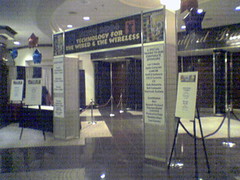 It is less than two weeks before the North Carolina Educational Technology Conference, my state’s largest edtech conference of the year. This conference is unique in that the planning, organization, and management of the conference are not operated by an association, but by a group of educators, who years ago, saw a need for a large state conference, when the state department of education was struggling with severe budget cuts.
It is less than two weeks before the North Carolina Educational Technology Conference, my state’s largest edtech conference of the year. This conference is unique in that the planning, organization, and management of the conference are not operated by an association, but by a group of educators, who years ago, saw a need for a large state conference, when the state department of education was struggling with severe budget cuts.
 Hall just showed a very powerful video clip of a cave drawing. But, thanks to animation, one of the horses, peals off the wall, and starts to run away. The end is sad, but the message is, how we express our selves has advanced madly.
Hall just showed a very powerful video clip of a cave drawing. But, thanks to animation, one of the horses, peals off the wall, and starts to run away. The end is sad, but the message is, how we express our selves has advanced madly.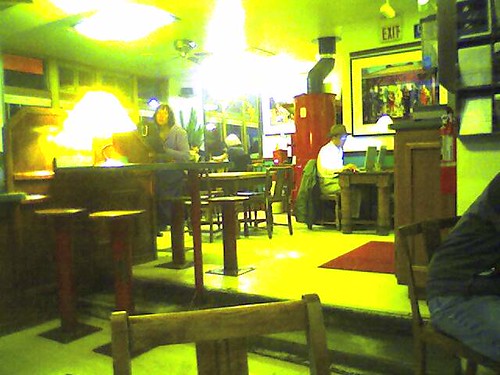
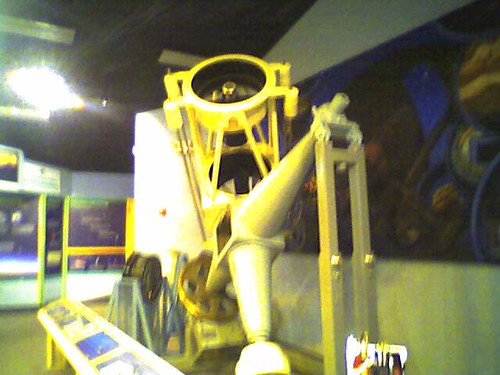
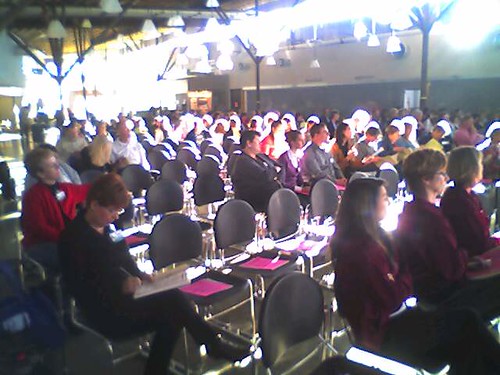
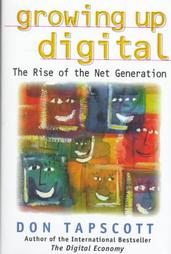 In going through some books (I’m surprised how old Millennials Rising [2000] and Growing Up Digital [1998] are now), and ran across the Participant Rights and Rules that Don Tapscott used in the kids interactive forum he used in preparing the book. They seem especially appropriate for today’s classroom blogging communities.
In going through some books (I’m surprised how old Millennials Rising [2000] and Growing Up Digital [1998] are now), and ran across the Participant Rights and Rules that Don Tapscott used in the kids interactive forum he used in preparing the book. They seem especially appropriate for today’s classroom blogging communities.